WHEN YOU DO a heavyweight bench press—arguably the premier upper body-building exercise for lifters of all stripes—there are two muscles working in tandem to power the bar up to the top of each rep: the chest and triceps.
This combination doesn’t only team up for the barbell bench press specifically; your chest and triceps work together whenever you push horizontally (think bench press, pushup, etc.), making them one of the most important weight room pairings. You can build an entire training session around this essential movement pattern, whether you’re planning an upper body chest day or as part of a more balanced push-pull-legs split.
Here’s everything you need to know about training the chest and triceps together, from the reasons why you should structure your sessions with the pairing in mind to an example workout (with Beginner and Advanced tiers) you can use for your upper body.
The Anatomy of the Chest and Triceps
The chest is made up of the pectoral muscles (a.k.a. the pecs). The pecs are comprised of two muscles: the pectoralis major and the pectoralis minor. The pec major is bigger, and sits above the pec minor. The pec major is responsible for adduction of the arm (movement in toward the body’s midline) and rotation of the arm forward, while the pec minor is responsible for moving your ribs and shoulders. The serratus anterior and subclavis are also considered chest muscles.
The triceps brachii are the largest muscle of the arms, positioned on the posterior (rear) of the upper arm. As the name implies, the triceps is a three-headed muscle, composed of a long, medial, and lateral head. The three heads are connected to your elbow and humerus, and the long head is also connected to the shoulder. All muscles of the triceps are responsible for elbow extension, or straightening the arm. Given the long head’s position, it’s also involved in extension and adduction of the shoulder joint.
Benefits of Training the Chest and Triceps Together
Pairing up your chest and triceps is just common sense, no matter your goal, according to Men’s Health fitness director Ebenezer Samuel, C.S.C.S. “Your chest is the dominant player in every bench press variation, and your triceps are a major assistant in that process, especially as you near the moment where you straighten your elbows,” he says. “That means you’re training your triceps anyway on nearly every chest workout.” Samuel also notes that many of the compound movements targeting the chest and shoulders subject your triceps to heavy loads, as well, which is “a key mechanism for arm growth.”
Another key benefit to training the two muscle groups together: efficiency. You’re not only being more efficient when you hit both at once—the types of exercises you’ll do will help to save you valuable warmup time, too. Samuel notes that the compound movements you’ll feature at the top of these training days (think: heavy presses) will help to prepare the elbow joint before you shift into isolation triceps exercises. “Moves like skull crushers or JM presses can sometimes cause elbow soreness and pain if you haven’t warmed up the joint— but the presses and pushups you do when training chest can help ready your elbow for the more focused isolation movements,” he says.
How to Progress Your Chest and Triceps Workouts
You can’t expect a perfectly linear path when you’re training chest and triceps—and that’s because not all of these exercises will do the same thing for your development, according to Samuel. “Your heavier motions, like incline presses, dumbbell presses, or even pushups, are exercises where you’ll want to develop strength and power,” he says. “You should aim to progressively overload these movements over the course of weeks and months of training.”
The triceps are a different beast. Samuel says the isolation exercises you’ll use are more focused on the pump, mind-muscle connection, and creating challenge for the triceps muscle when lengthened than those chest-focused compound movements. One thing you shouldn’t be concerned about when you train the tris is weight. “Instead, focus on keeping sets higher-rep and intense, using intensifying techniques like rest-pauses, drop sets, or eccentrics to progress these movements over the course of weeks and months,” he says. “Going too heavy too fast on triceps isolation moves like skull crushers and kickbacks will often lead to you utilizing the wrong muscles to drive the movement (i.e. involving your lats as a main driver during skull crushers, or rocking your elbows back and forth on triceps kickbacks).”
The Chest and Triceps Workout for Beginners
First Exercise: Heavy Press
Eb says: Aim to start with a heavy pressing movement that targets your chest. On this exercise, you may want to try to push the load a bit, even doing as few as 5 reps. Do 3 to 4 sets, aiming for 8 to 10 reps a set (but again, it’s OK to fall short if you’re pushing a heavy weight with good form).
Examples: Barbell Bench Press, Dumbbell Bench Press, Incline Dumbbell Press
Sets and Reps: 3 to 4 sets of 8 to 10 reps
Barbell Bench Press
How to Do It:
- Lie back on the bench under the bar, with your feet flat on the floor. Drive your shoulders into the bench then squeeze your shoulder blades, abs, and glutes to create full-body tension.
- Raise your arms up to grip the barbell. Everyone’s ideal grip will be different, but aim to start with your hands at or just slightly further than shoulder-width. Squeeze the bar and aim to create internal shoulder rotation, engaging your lats and “breaking” the bar.
- Lift the bar off the rack. Lower it to your chest, aiming to keep your elbows at a 45 degree angle relative to your torso.
- Press the weight straight up, squeezing your chest at the top.
Dumbbell Bench Press
How to Do It:
- Sit on the bench holding a pair of dumbbells, with your feet flat on the floor.
- Lie back on the bench, shifting the dumbbells to your chest with your elbows at a 45 degree angle relative to your torso. Drive your shoulders into the bench then squeeze your shoulder blades, abs, and glutes to create full-body tension.
- Press the weight straight up, squeezing your pecs at the top.
- Lower the weight back down to about an inch above your chest.
Dumbbell Incline Press
How to Do It:
- Sit on the incline bench, holding a set of dumbbells. Your feet should be flat on the floor, and your back flat on the pad. Squeeze your shoulder blades to drive them back into the bench, and squeeze your abs and glutes.
- Kick the weights up to your chest. Your elbows should be at a 45 degree angle relative to your torso.
- Press the weights straight up overhead to the ceiling. There’s no need to knock them together at the top. Squeeze your chest at the top position.
- Lower the weights back down to your chest, but there’s no need to go low enough to tap your chest on each rep. Descend down as low as your shoulder mobility allows before the next rep.
Second Exercise: Press Angle Change/Fly Variation
Eb says: You have two options here. Either change angles on your second movement (so if you did a flat bench press, do an incline press, or vice versa), or shift the focus of your movement mechanic to do a cable fly and concentrate on chest adduction (bringing your upper arm toward your midline, an idea your pecs drive). Do 3 sets of 10 to 12 reps here, focusing on feeling a pump.
Examples: T-Bench Fly, Cable Fly, Bench Press or Dumbbell Press variation
Sets and Reps: 3 sets of 10 to 12 reps
T-Bench Fly
How to Do It:
- Start sitting on the bench with a pair of dumbbells on your thighs in a neutral grip. Lower yourself down so that your shoulders are on the bench, and your legs form a bridge position. Squeeze your shoulder blades, abs, and glutes.
- Press the dumbbells straight up above your chest. Drive your shoulders into the bench and squeeze your glutes.
- Open up your arms and lower them down to the bench, taking 3 to 4 seconds. Come to a complete stop and rest your upper arms and elbows on the bench for a beat.
- Fly your arms back up to the starting position, squeezing your chest hard at the top.
Cable Fly
How to Do It:
- Start standing in the middle of a cable machine, with the cables set just above your shoulders. Grasp the handles near the base of your palm, then step forward so that your feet are pointed forward. Squeeze your abs to keep your hips square and drive the cables forward.
- Squeeze your shoulder blades and keep that tension for the entire round. This will help to keep your shoulders in proper position.
- Open your arms back up as wide as you can while maintaining proper posture, then fly your hands back together, squeezing your chest as you drive your pinkies up. Don’t cross the cables.
Third Exercise: Triceps Isolation
Eb says: Now shift to triceps training. Since you’re doing just one triceps movement, aim to make it an exercise that strongly promotes isolation and doesn’t let you gain assistance from your chest. Do 3 sets of 12 to 15 reps, focusing on form and squeezing your triceps.
Options: Triceps Pressdowns, Dumbbell Skull Crushers
Sets and Reps: 3 sets of 12 to 15 reps
Triceps Pressdowns
How to Do It:
- Stand holding the cable rope at chest height with a neutral grip, with your shoulders, abs, and glutes engaged to create tension. Your elbows should be tight to either side of your torso.
- Press down, moving only at the elbows. Squeeze your triceps at the bottom of the cable’s range.
- To avoid cheating, support your back on an incline bench and perform the movement.
Dumbbell Skull Crushers
How to Do It:
- Lie back on the bench, holding a pair of dumbbells in a neutral grip. Drive your shoulders into the bench, then squeeze your shoulders, abs, and glutes.
- Press the weight straight up, then shift your upper arms so that you’re at a 92 degree angle relative to your torso.
- Moving only at the elbows, lower the weights down toward your head.
- Extend your arms back to the starting position, squeezing your triceps.
Advanced Chest and Triceps Workout
As you grow in your chest and triceps training, you’ll want to layer on volume – although not simply for the same of volume. Your goal is to add in volume that lets you train with greater intensity, while also hitting your muscles from more angles and addressing different portions of the force curve to bulletproof joints and also spark greater gains.
First Exercise: Heavy Press
Eb says: You’ll still want to start with a heavy pressing movement, again working 3 to 4 sets. Shoot for 5 to 10 reps per set, aiming to go heavy.
Examples: Barbell Bench Press, Dumbbell Bench Press, Incline Dumbbell Press
Sets and Reps: 3 to 4 sets of 5 to 10 reps
Barbell Bench Press
How to Do It:
- Use the form cues listed above in the Beginner’s section. Focus on progressing to heavier weights, keeping a strong base (feet planted, glutes and core squeezed).
Dumbbell Bench Press
How to Do It:
- Use the form cues listed above in the Beginner’s section.
Incline Dumbbell Press
How to Do It:
- Use the form cues listed above in the Beginner’s section.
Second Exercise: Press Angle Change
Eb says: Now change upper arm angles relative to torso, so you can hit a different portion of your chest. If you just did flat bench press variation, aim to do an incline press variation with the incline between 30 to 45 degrees. If you started on the incline, attack a flat bench press variation, or even a machine press here. Do 3 to 4 sets of 8 to 10 reps, starting to pile up quality volume.
Examples: Machine Press, Barbell Bench Press, Dumbbell Bench Press, Incline Dumbbell Press
Sets and Reps: 3 to 4 sets of 8 to 10 reps
Machine Press
How to Do It:
- Align your seat to the point where the handles are about two inches below your shoulders.
- Keep your shoulder blades tightly squeezed against the back pad, and your glutes and lower back wedged into the pad as well.
- Drive your elbows down and tight, while pushing into the floor with your legs.
- Press forward, squeezing at the top.
Third Exercise: Chest Adduction/Bodyweight
Eb says: Either do a chest adduction movement here, or master your bodyweight. Any of the bench press fly variations mentioned above could work, and keep the reps higher. Aim for 3 sets of 10 to 12 reps, focusing less on load (you’ve got some fatigue on you now) and more on technique and squeeze. If you opt for a pushup variation, do 2 to 3 sets to failure.
Options: Cable Fly, T-Bench Fly, Pushup
Sets and Reps: 3 sets of 10 to 12 reps (fly); 2 to 3 sets to failure (bodyweight)
T-Bench Fly
How to Do It:
- Use the form cues listed above in the Beginner’s section.
Cable Fly
- Use the form cues listed above in the Beginner’s section.
Pushup
How to Do It:
- Start in a high plank position, with your palms flat on the floor, stacked directly below your shoulders.
- Squeeze your shoulders, glutes, and core to create full-body tension. Your spine should form a straight line, with a neutral spine.
- Bend your elbows to descend to the floor, stopping with your chest just above the ground. Your elbows should be at a 45 degree angle relative to the torso.
- Press back up off the floor, raising up to the top position with your elbows fully extended.
Fourth Exercise: Triceps Isolation
Eb says: Now shift gear for two triceps-focused exercises. Start with an exercise that has you moving only at the elbow joint, such as a triceps press down or cable triceps kickback. Work either move for 3 sets of 12 to 15 reps, focusing on squeezing your triceps on every rep.
Options: Triceps Pressdown, Triceps Kickback
Sets and Reps: 3 sets of 12 to 15 reps
Triceps Pressdown
How to Do It:
- Use the form cues listed above in the Beginner’s section.
Triceps Kickback
How to Do It:
- Set the bench so that you can prop yourself into position with one arm against it, hinging at the waist. Squeeze your glutes and core to create tension.
- Look down at the floor, keeping your neck in a neutral position. Pick up the dumbbell off the floor.
- Row the dumbbell up until your upper arm is parallel with the ground. You’ll work from this position. Keep your whole body rigid by maintaining full-body tension, squeezing your glutes and core.
- Extend your elbow to kick back, moving only at the joint. At the top of the position with your arm straight, hold the weight still for a count and squeeze your triceps.
- Close your elbow to come back to the starting position, keeping your upper arm in that parallel position.
Fifth Exercise: Triceps Drop Set
Eb says: Finish with a triceps mechanical drop set that blends isolation and multi-joint concepts. Start by doing 10 to 12 reps of dumbbell or barbell skull crushers, focusing on the stretch at the bottom of each rep. After each set of those, using either the weight you already have or just a bit more load than that, do 8 to 10 reps of close-grip bench presses (or pushups, if you’re training at home). Do 3 sets like this, for a well-rounded chest and triceps workout.
Sets and Reps: 3 rounds of 10 to 12 reps (skull crusher), then 8 to 10 reps (close grip bench press/pushup)
Skull Crusher
How to Do It:
- Use the form cues listed above in the Beginner’s section.
Close Grip Bench Press
How to Do It:
- Start just as you would for a standard bench press. Lie back on the bench under the bar, with your feet flat on the floor. Drive your shoulders into the bench then squeeze your shoulder blades, abs, and glutes to create full-body tension.
- Raise your arms up to grip the barbell. Here is where you’ll break from the stadrad approach: Start with your hands just narrower than shoulder-width. The exact placement will vary depending on the person. Squeeze the bar and aim to create internal shoulder rotation, engaging your lats and “breaking” the bar.
- Lift the bar off the rack. Lower it to your chest, aiming to keep your elbows at a 45 degree angle relative to your torso.
- Press the weight straight up, squeezing your chest at the top.
Close Grip Pushup
How to Do It:
- Get in a strong pushup position, with your hands stacked under your shoulders, toes on the floor, and a flat back. Squeeze your shoulder blades, abs, and glutes to create tension.
- Move your hands in slightly narrower than shoulder width.
- Bend your elbows to lower your torso down to just above the floor. Don’t allow your elbows to flare out; keep them ‘glued’ to your sides.
- Press off the floor back up to the top position, extending your elbows.
Brett Williams, a fitness editor at Men’s Health, is a NASM-CPT certified trainer and former pro football player and tech reporter who splits his workout time between strength and conditioning training, martial arts, and running. You can find his work elsewhere at Mashable, Thrillist, and other outlets.
Ebenezer Samuel, C.S.C.S., is the fitness director of Men’s Health and a certified trainer with more than 10 years of training experience. He’s logged training time with NFL athletes and track athletes and his current training regimen includes weight training, HIIT conditioning, and yoga. Before joining Men’s Health in 2017, he served as a sports columnist and tech columnist for the New York Daily News.

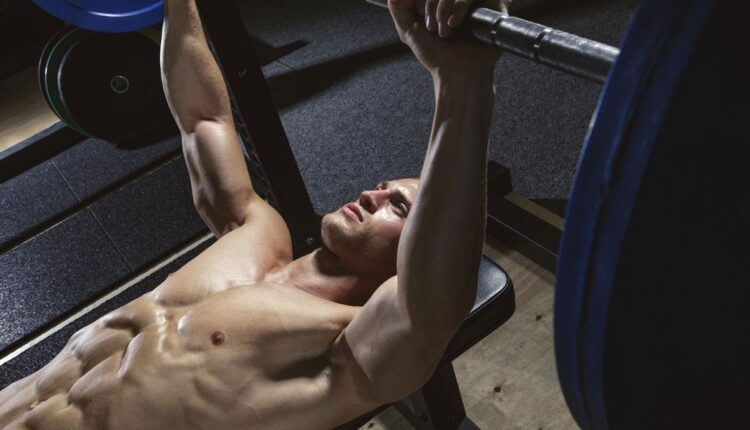


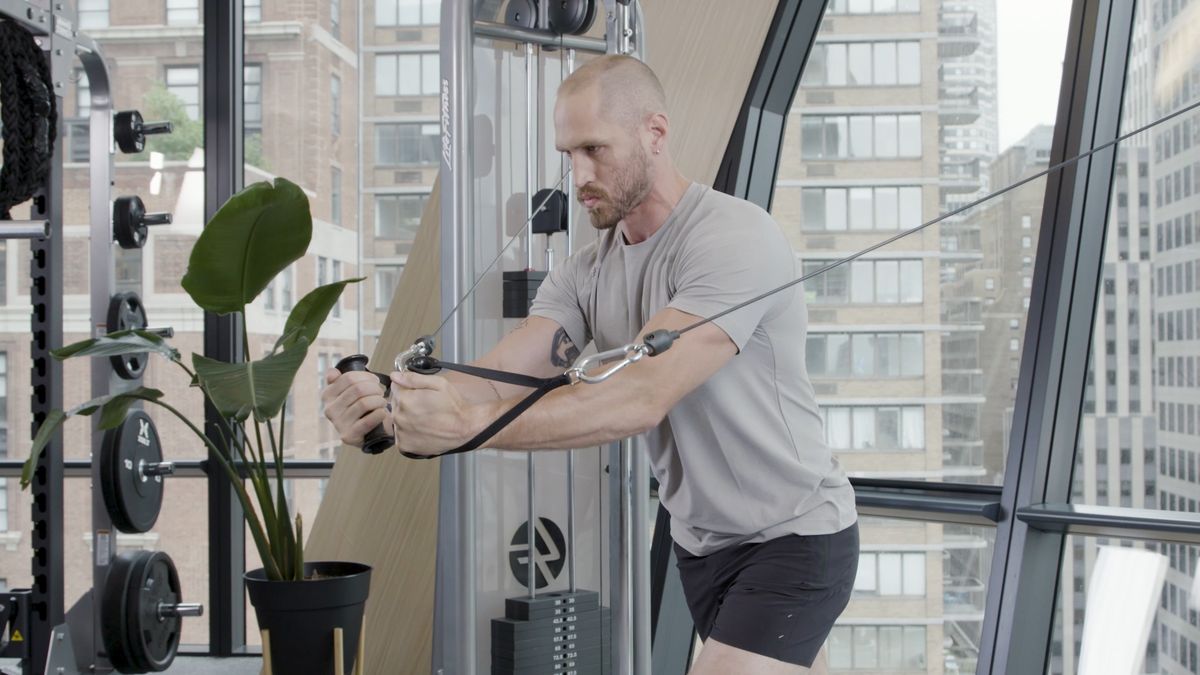
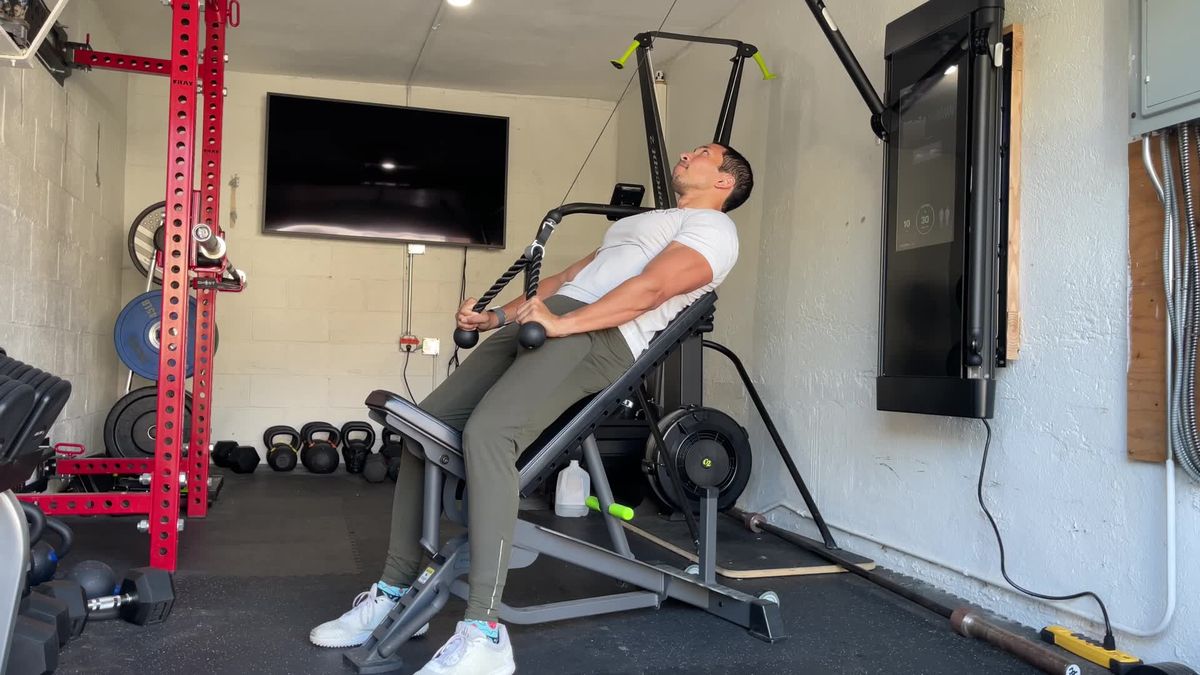

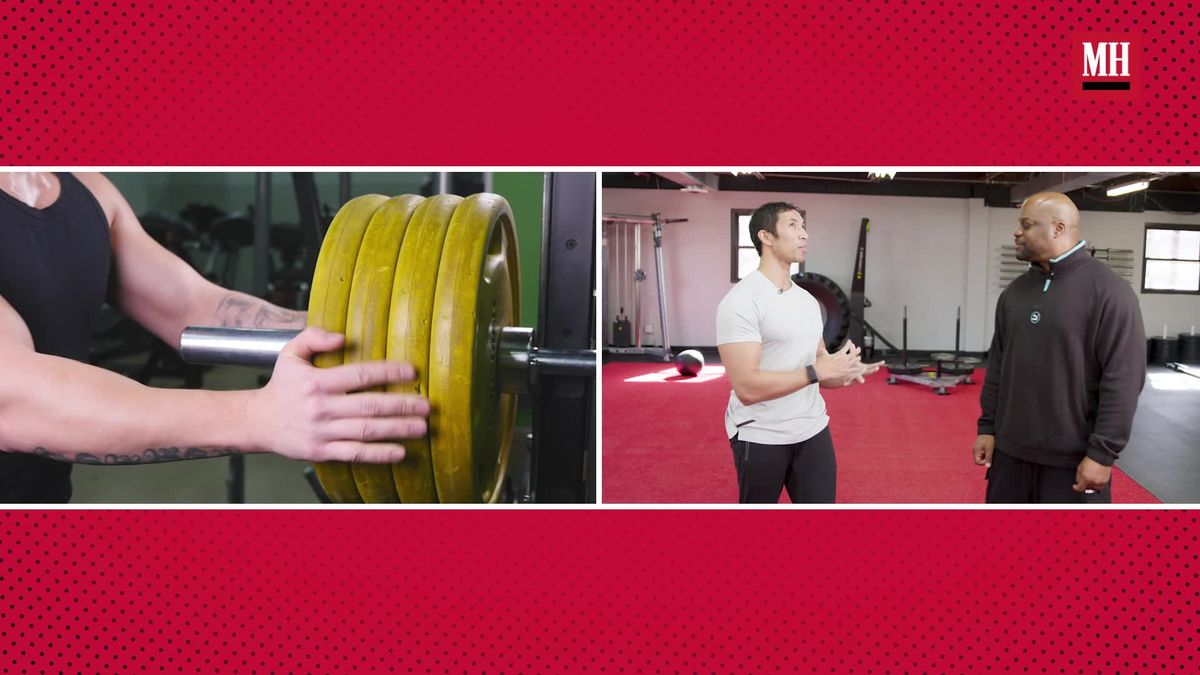
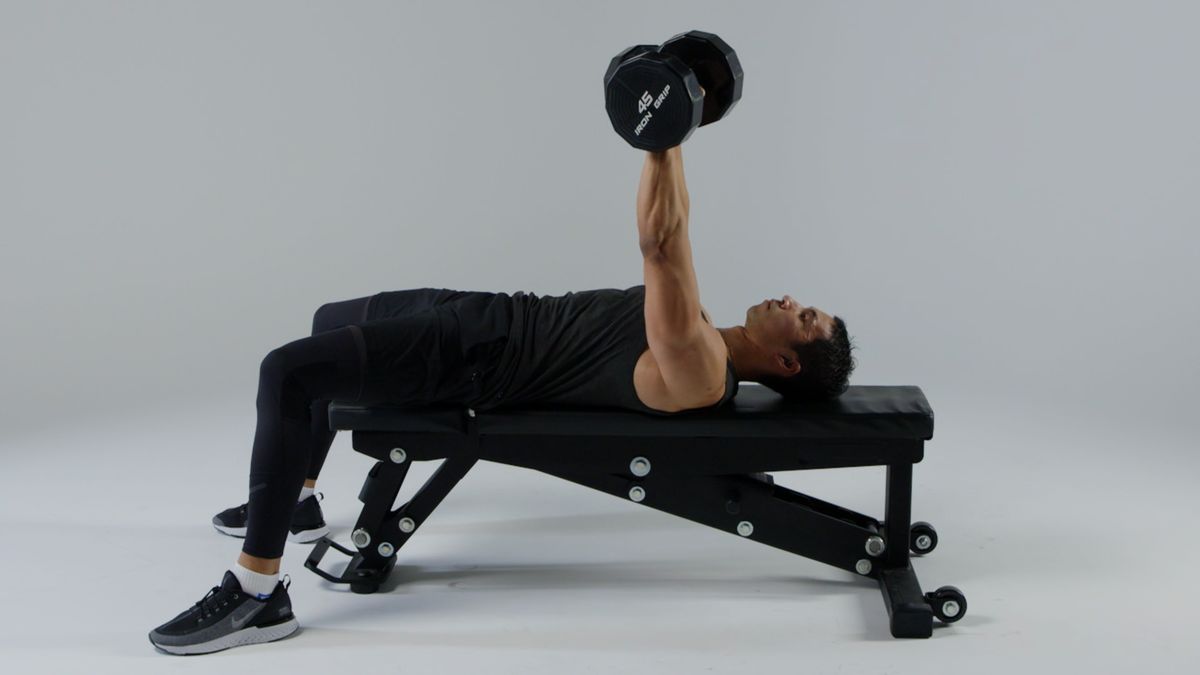
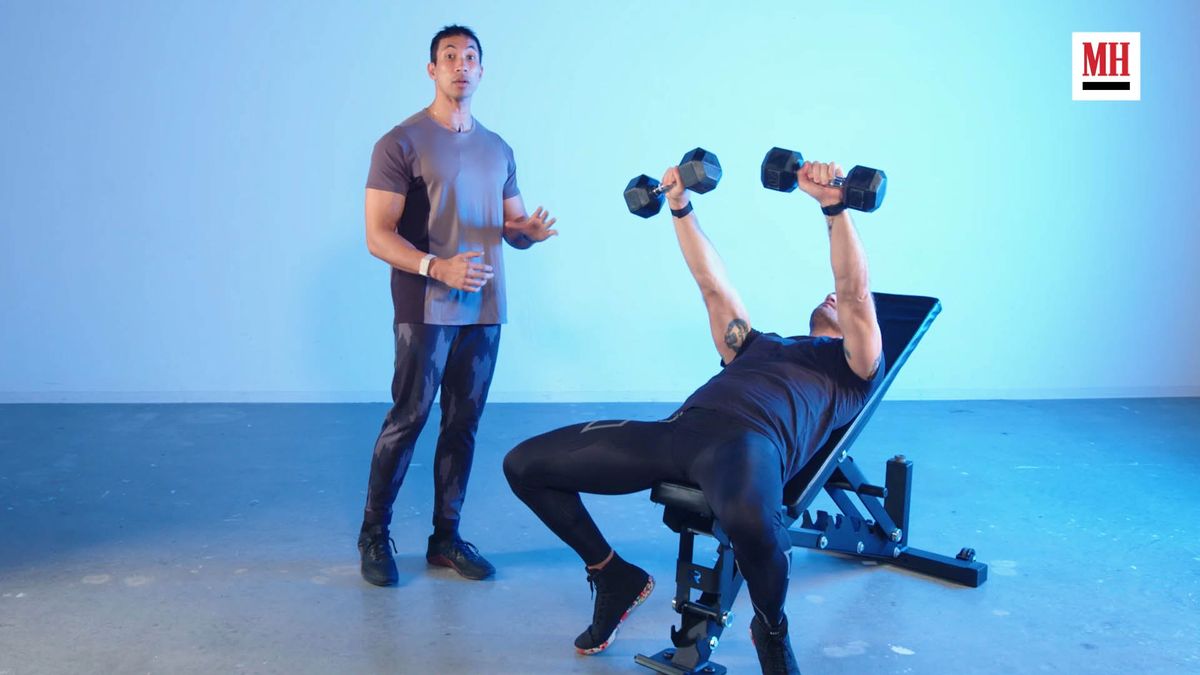
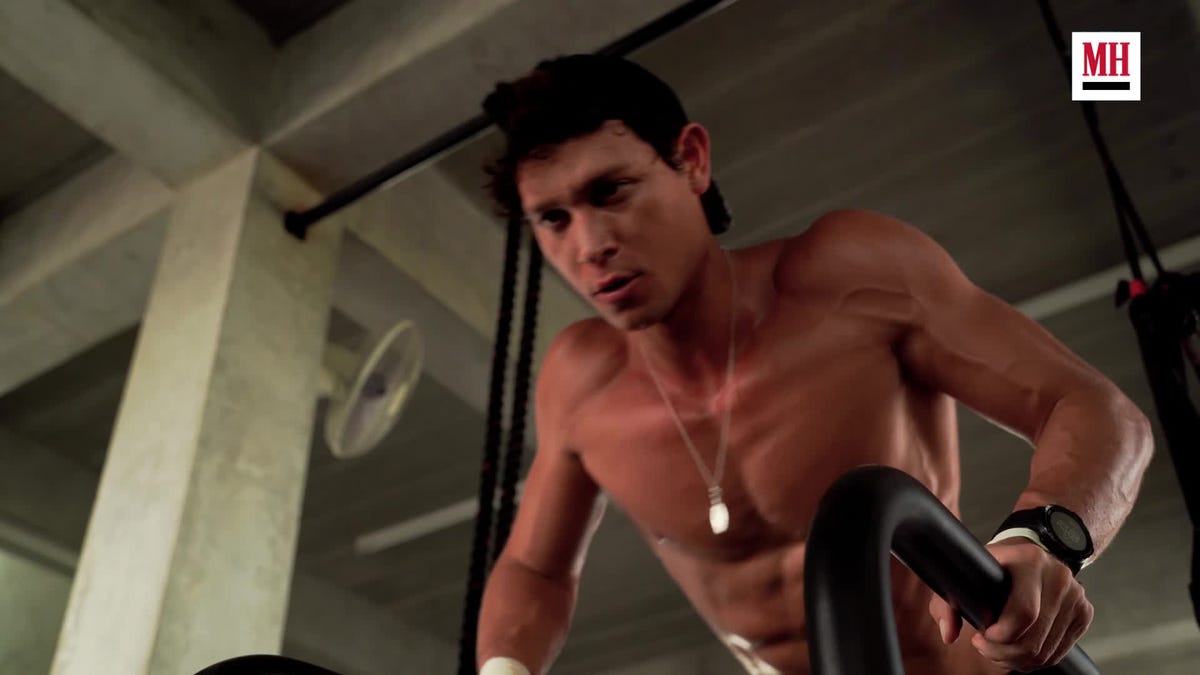
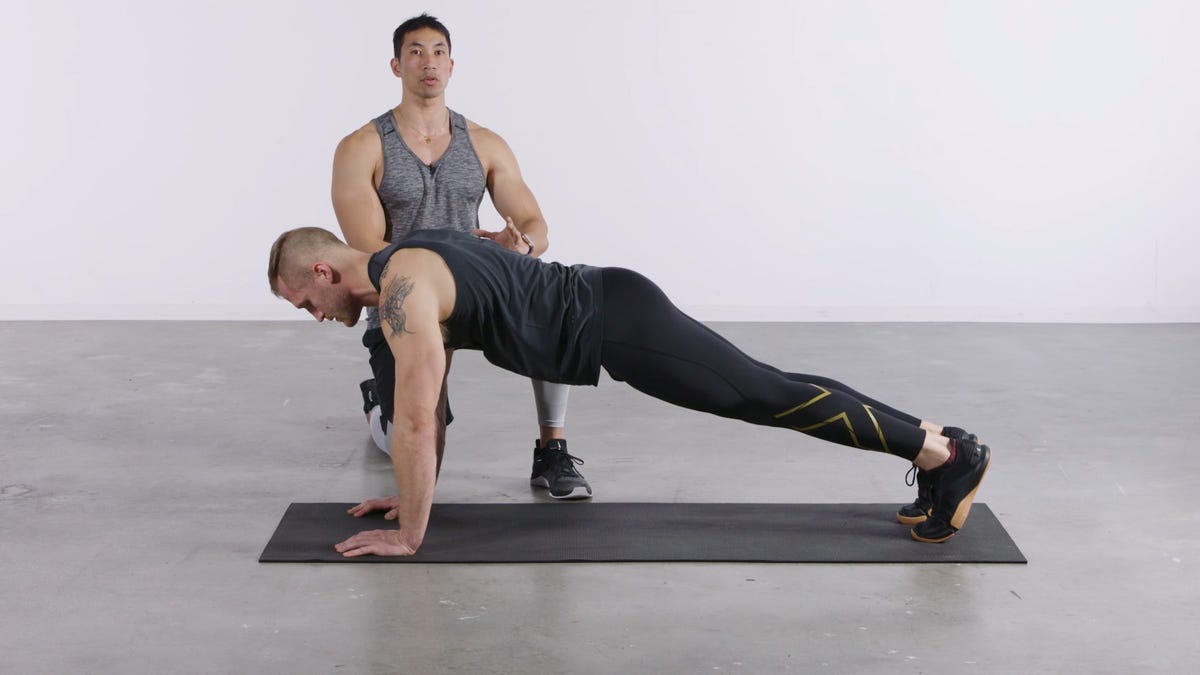
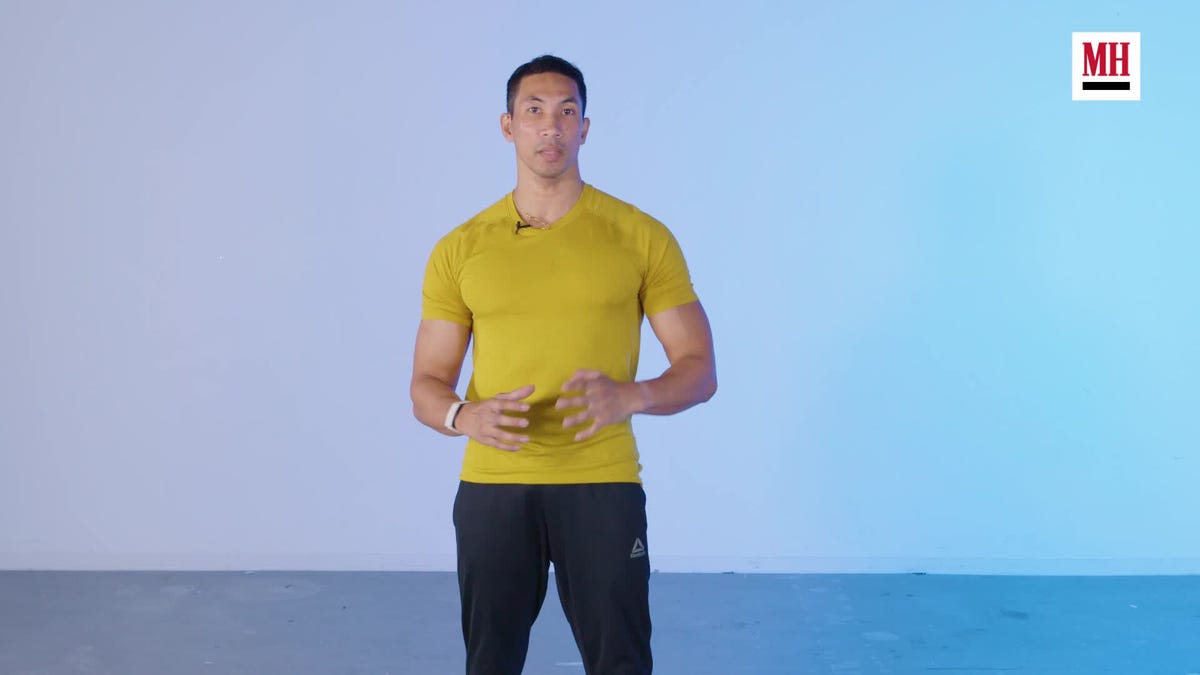
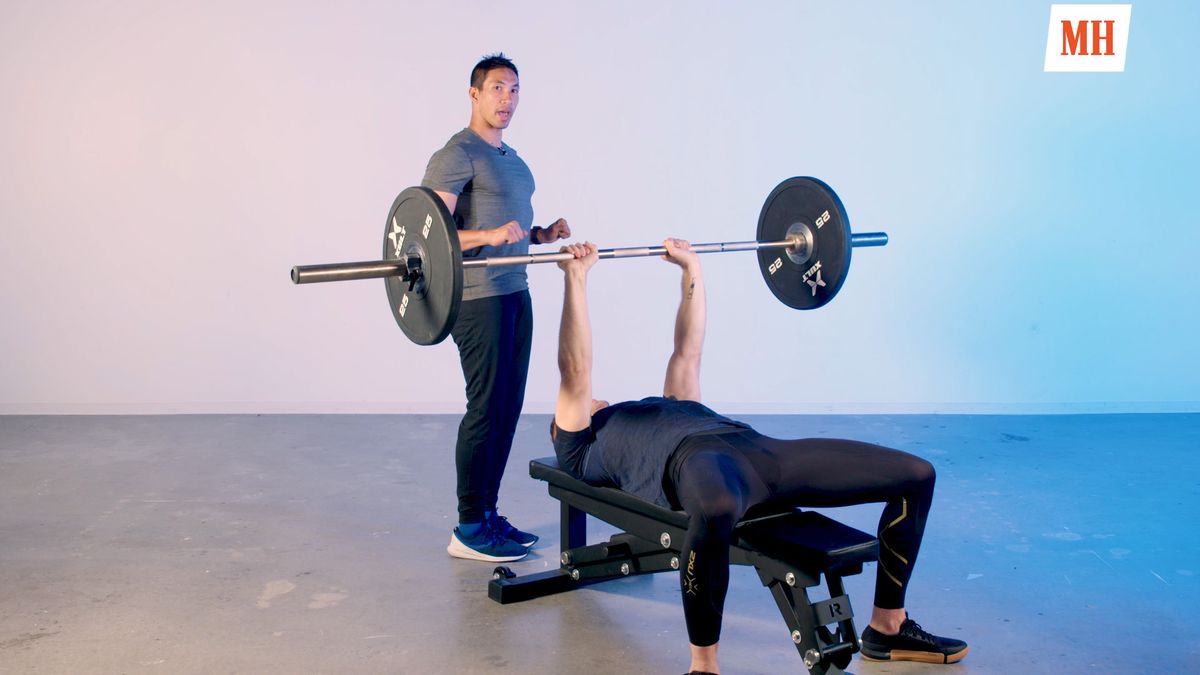
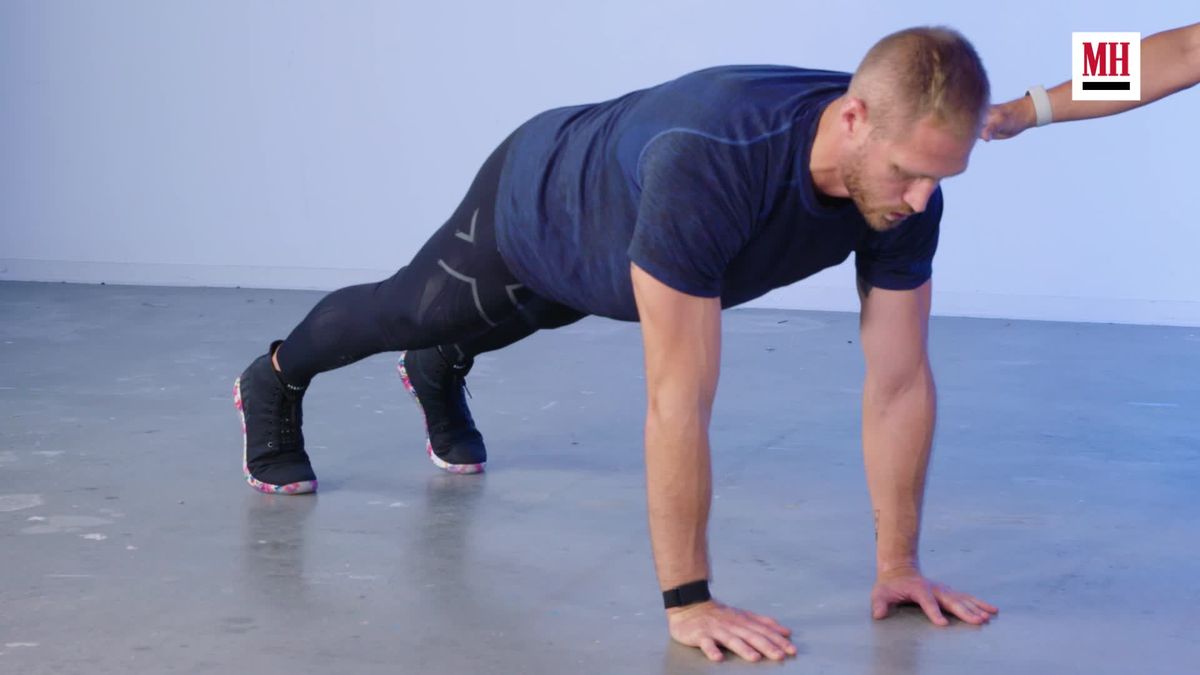
Comments are closed.